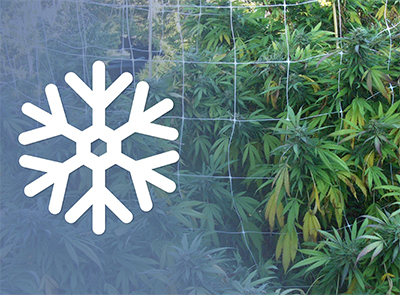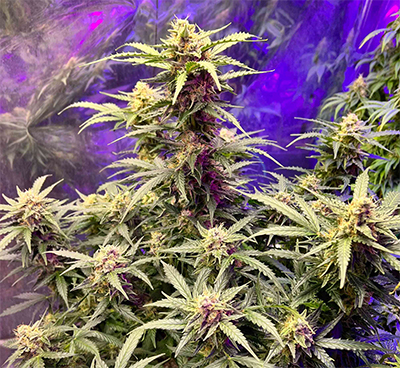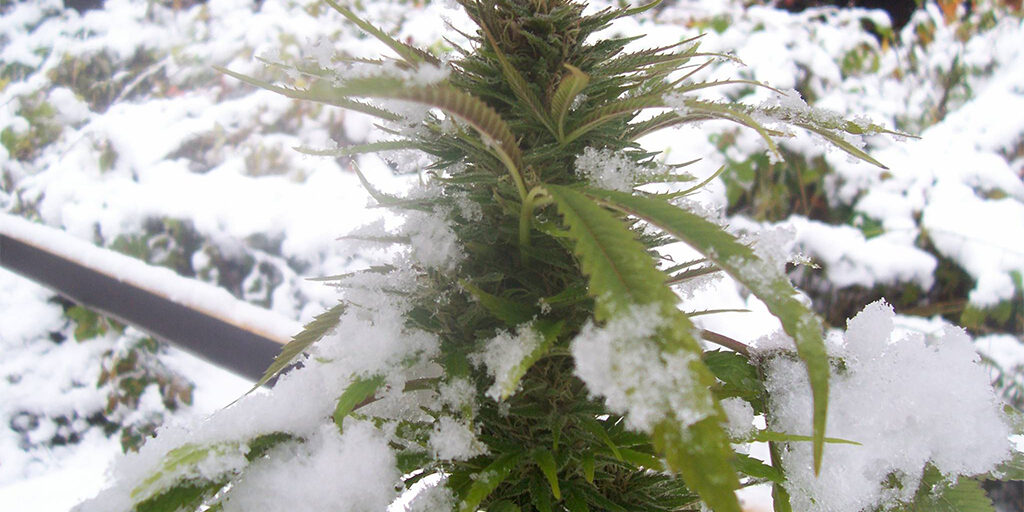Cannabis, like many plants, has specific environmental requirements for optimal growth. While it is a resilient plant capable of thriving in various conditions, frost can pose a significant challenge to cannabis cultivation. Understanding the impact of frost on cannabis and how to mitigate its effects is crucial for growers, particularly those in regions prone to cold temperatures.
The Nature of Frost and Its Effects on Plants
Frost occurs when temperatures drop below the freezing point of water (0°C or 32°F), causing water vapor in the air to solidify into ice crystals on surfaces, including plants. This can lead to several problems for cannabis plants:
- Cell Damage: Frost can cause the water within plant cells to freeze. As water expands when it turns into ice, it can rupture cell walls, leading to cellular damage or death.
- Reduced Photosynthesis: Cold temperatures slow down the metabolic processes in plants, including photosynthesis. This can hinder growth and reduce the plant’s ability to produce energy.
- Nutrient Uptake: Frost can also affect the soil, making it harder for roots to absorb water and nutrients. This can lead to deficiencies and overall poor plant health.
Cannabis and Cold Sensitivity
 Cannabis is a warm-season plant that thrives in temperatures between 70-85°F (20-30°C) during the day and around 60-70°F (15-20°C) at night. It is particularly sensitive to frost, and exposure to freezing temperatures can be detrimental.
Cannabis is a warm-season plant that thrives in temperatures between 70-85°F (20-30°C) during the day and around 60-70°F (15-20°C) at night. It is particularly sensitive to frost, and exposure to freezing temperatures can be detrimental.
- Seedlings and Young Plants: Young cannabis plants are especially vulnerable to frost. Their small size and limited root systems make it difficult for them to recover from cellular damage caused by freezing temperatures.
- Flowering Stage: Frost during the flowering stage can be particularly damaging. It can affect bud development, leading to lower yields and poor-quality flowers. Trichomes, the resinous glands on cannabis buds that contain cannabinoids and terpenes, can be damaged by frost, reducing the potency and aroma of the final product.
Recognizing Frost Damage
Frost damage in cannabis plants can be identified by several symptoms:
- Discoloration: Leaves may turn black or dark brown, indicating cellular damage.
- Wilting: Frost-damaged plants often exhibit wilting or drooping leaves and stems.
- Necrosis: Dead tissue may appear on leaves and buds, leading to decay and mold issues.
Mitigating Frost Risks
To protect cannabis plants from frost, growers can employ several strategies:
- Site Selection: Choosing the right location for an outdoor grow is crucial. Areas with good air circulation, such as hillsides, are less prone to frost accumulation compared to low-lying areas where cold air settles.
- Planting Schedule: Timing the planting and harvest schedule to avoid the frost season is an effective strategy. This may involve starting seeds indoors and transplanting them outdoors after the last frost date in spring or harvesting before the first frost in fall.
- Row Covers and Greenhouses: Using row covers, frost blankets, or greenhouses can provide an additional layer of protection. These structures trap heat and keep the air around the plants warmer than the outside temperature.
- Watering: Moist soil retains heat better than dry soil. Watering the plants before a frost event can help protect the roots and lower portions of the plants.
- Mulching: Applying mulch around the base of the plants can help insulate the roots and retain soil warmth.
Frost-Resistant Cannabis Strains
 Some cannabis strains are more resilient to cold temperatures and frost. These strains are often derived from landrace varieties originating from regions with harsh climates. Examples include:
Some cannabis strains are more resilient to cold temperatures and frost. These strains are often derived from landrace varieties originating from regions with harsh climates. Examples include:
- Hindu Kush: Originating from the mountainous regions of Afghanistan and Pakistan, Hindu Kush is known for its resilience to cold temperatures.
- Northern Lights: A popular strain among indoor and outdoor growers, Northern Lights has a reputation for being hardy and resistant to various stressors, including cold weather.
- Durban Poison: This South African strain is known for its ability to withstand a range of environmental conditions, including cooler temperatures.
Indoor Cultivation and Frost
While frost is primarily a concern for outdoor growers, indoor growers also need to be mindful of temperature control. Maintaining a stable environment with adequate heating is crucial to prevent cold stress and ensure healthy plant development.
- Insulation: Properly insulating the grow space can help maintain consistent temperatures. This includes insulating walls, floors, and ceilings to prevent heat loss.
- Heating Systems: Using heaters with thermostats can ensure that the temperature stays within the optimal range. It’s important to monitor and adjust heating to avoid excessive temperature fluctuations.
- Humidity Control: Cold temperatures can also affect humidity levels. Using humidifiers or dehumidifiers to maintain the ideal humidity range (40-60% during vegetative stage, 40-50% during flowering) is essential for preventing mold and mildew issues.
Conclusion
Cannabis cultivation requires careful consideration of environmental factors, including the risk of frost. While frost can cause significant damage to cannabis plants, understanding its effects and implementing preventive measures can help mitigate these risks. By selecting frost-resistant strains, timing planting and harvest schedules appropriately, and employing protective strategies like row covers and proper site selection, growers can successfully cultivate cannabis even in regions prone to cold temperatures. For indoor growers, maintaining stable temperatures and humidity levels is key to preventing cold stress. With the right approach, cannabis can thrive and produce high-quality yields despite the challenges posed by frost.

